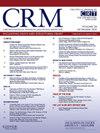Complete versus incomplete revascularization in patients with a non-ST-elevation myocardial infarction: Analysis from the e-ULTIMASTER registry
IF 1.6
Q3 CARDIAC & CARDIOVASCULAR SYSTEMS
引用次数: 0
Abstract
Background
Incomplete revascularization (ICR) has been associated with a worse prognosis after a percutaneous coronary intervention (PCI). In NSTEMI patients with multivessel disease (MVD) however, the benefit of a complete revascularization (CR) remains unclear.
Methods
Patients presenting with an NSTEMI and MVD were selected from the global e-ULTIMASTER registry and grouped according to completeness of revascularization at index hospitalization discharge. The primary endpoint was the patient oriented composite endpoint (POCE) defined as all death, any myocardial infarction, and any revascularization at 1 year. Target lesion failure (TLF) was defined as the composite of cardiac death, target vessel related myocardial infarction and clinically driven target lesion revascularization. Inverse propensity score weighting (IPSW) was performed to harmonize the patient's baseline characteristics between the groups.
Results
CR was achieved in 1800 patients (47.0 %) and ICR in 2032 patients (53.0 %). The incidence of POCE at 1 year was lower in the CR group compared to the ICR group: 7.0 % vs. 12.9 %, p < 0.0001. Similarly for TLF at 1 year: 3.6 % vs. 5.5 %, p < 0.01. After IPSW, the incidence of POCE was 7.7 % vs. 12.0 %, p < 0.0001, due to a lower all-cause mortality: 2.7 % vs. 4.2 %, p = 0.02 and less revascularizations: 4.9 % vs. 7.9 %, p < 0.001. The incidence of TLF was no longer statistically significant: CR 3.9 % vs. IR 5.0 %, p = 0.10.
Conclusions
Patients with a NSTEMI and multi vessel disease undergoing a percutaneous coronary revascularization with a complete revascularization during index hospitalization have better 1-year clinical outcomes. Randomized studies are warranted to confirm these results.
非ST段抬高型心肌梗死患者的完全与不完全血管再通:e-ULTIMASTER登记分析
背景:完全血运重建术(ICR)与经皮冠状动脉介入治疗(PCI)后较差的预后相关。然而,在伴有多血管疾病(MVD)的非stemi患者中,完全血运重建术(CR)的益处尚不清楚。方法从全球e-ULTIMASTER注册表中选择具有NSTEMI和MVD的患者,并根据出院时血运重建的完整性进行分组。主要终点是患者导向的复合终点(POCE),定义为1年内所有死亡、任何心肌梗死和任何血运重建。靶病变衰竭(Target lesion failure, TLF)定义为心源性死亡、靶血管相关性心肌梗死和临床驱动的靶病变血运重建的复合。采用逆倾向评分加权(IPSW)来协调两组患者的基线特征。结果scr 1800例(47.0%),ICR 2032例(53.0%)。与ICR组相比,CR组1年POCE发生率较低:7.0% vs 12.9%, p <;0.0001. 同样,1年的TLF: 3.6%对5.5%,p <;0.01. IPSW后,POCE的发生率分别为7.7%和12.0%,p <;0.0001,全因死亡率较低:2.7%对4.2%,p = 0.02,血运重建术较少:4.9%对7.9%,p <;0.001. TLF的发生率不再具有统计学意义:CR为3.9%,IR为5.0%,p = 0.10。结论非stemi合并多血管疾病患者在住院期间行经皮冠状动脉血管重建术并完全血管重建术具有较好的1年临床疗效。随机研究可以证实这些结果。
本文章由计算机程序翻译,如有差异,请以英文原文为准。
求助全文
约1分钟内获得全文
求助全文
来源期刊

Cardiovascular Revascularization Medicine
CARDIAC & CARDIOVASCULAR SYSTEMS-
CiteScore
3.30
自引率
5.90%
发文量
687
审稿时长
36 days
期刊介绍:
Cardiovascular Revascularization Medicine (CRM) is an international and multidisciplinary journal that publishes original laboratory and clinical investigations related to revascularization therapies in cardiovascular medicine. Cardiovascular Revascularization Medicine publishes articles related to preclinical work and molecular interventions, including angiogenesis, cell therapy, pharmacological interventions, restenosis management, and prevention, including experiments conducted in human subjects, in laboratory animals, and in vitro. Specific areas of interest include percutaneous angioplasty in coronary and peripheral arteries, intervention in structural heart disease, cardiovascular surgery, etc.
 求助内容:
求助内容: 应助结果提醒方式:
应助结果提醒方式:


